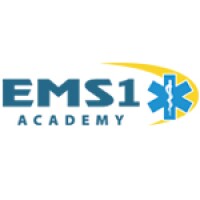The EMS1 Academy features a “Burns” course, a one-hour accredited Medic Monthly course to educate EMRs/EMTs about the management of burn injuries. Visit The EMS1 Academy to learn more.
I attended several great sessions at the recent EMS Today conference in Tampa. One of the best was “The fire’s out, now what? Emergent burn care lessons” by Debbie Harrell, RN, MSN, NE-BC from the Shriner’s Hospitals for Children–Cincinnati.
Inhalation injury quick assessment
During her session, Harrell covered many points of burn care, but her description of a quick assessment for inhalation injury really stood out. Likening it to “putting the puzzle pieces together,” Ms. Harrell showed how four elements can provide BLS and ALS providers a quick way to triage the patient as low, moderate and high risk for inhalation injury. As with all good triage tools, it requires no equipment, no counting and no numbers or formulas to memorize.
- Mental status. The puzzle starts with an assessment of the patient’s mental status. Burns do not affect the level of consciousness unless the airway or respiratory system are directly involved. If the patient’s level is anything other than awake and oriented, they should immediately be considered high risk. An altered level of consciousness in a burn patient is likely due to:
- Hypoxia from airway compromise,
- Carbon monoxide or other toxic gas poisoning or
- Traumatic injuries
- Physical assessment. Next, conduct a quick physical assessment and note any visible burns to the face or singing of the nasal hair. Many of us learned that these are critical findings worthy of immediate airway intervention, but Harrell said that this is not usually the case. Unless there are other positive signs, these patients may be low risk. She stressed that the human body usually does a good job of protecting the airway from burns.
- Location of the fire. A commonly overlooked piece of the puzzle is the location of the fire. Was the patient exposed to the fire, heat and smoke inside a building or other confined space, or were they outside where there is less chance that the heat was concentrated? Being inside a building when a fire breaks out, or worse yet, an explosion occurs, brings a much higher risk of upper and lower airway inhalation injuries.
- Respiratory status. Last but not least, do a quick assessment of the patient’s respiratory status. This can begin with asking the patient what happened. Is their voice hoarse or do you hear any stridor as they breathe? Are they exhibiting any signs of respiratory distress other than the increased respiratory rate that may be simply due to the scary situation they just experienced? Look inside their mouth for any signs of carbonaceous sputum. Their answer to your “what happened” question should also confirm their level of consciousness.
If the patient shows an abnormal finding in any one of the last three puzzle pieces (physical assessment, location of the fire or respiratory status), then they have a low risk for an inhalation injury. Continue with a standard primary and secondary assessment to determine other injuries.
Two or more findings in the last three puzzle pieces puts the patient at moderate risk. Monitor the patient closely for changes and continue your assessment.
Top takeaways on burn assessment
Of course, burns present more hazards then just inhalation injuries and Harrell went on to touch on some important points of treating all burn injuries. Here are three takeaways from her presentation.
1. Hypothermia is a risk in burn treatment
Hypothermia is a significant complication in burn patients. Only cool the burn area enough to put out the fire. Use room temperature water for no more than 2-3 minutes and never use ice; it can actually worsen the injury.
2. Evaluate body surface area for 20%
Don’t spend too much time and effort on calculating the amount of body surface area (BSA) burned. It is more complicated than it looks and often, the severity of the burn evolves over time. It is more important to keep the patient covered and warm. Just estimate if the BSA is less than or greater than 20%.
3. Fluid administration rates for burn treatment
IV fluids are critical only if the BSA is greater than 20%. Patients younger than 2 or older than 65 are exceptions and should get IV fluids even for smaller burns. If IV fluids are administered, lactated Ringer’s is preferred but normal saline is acceptable, especially in the early stages. Administer the fluids at:
- 125 mL/hr for children 5 years and younger
- 250 mL/hr for kids 6-14
- 500 mL/hr for patients older than 14
Additional resources on burn assessment, treatment
Certainly, pre-hospital and hospital-based burn care involves much more. Harrell encouraged all providers to seek out more burn care training including the basic and advanced burn life support courses. You can also contact her at the Shriners Hospitals for Children–Cincinnati to bring her or one of their educators to your area for a class.
Learn more about burn assessment and treatment with these resources:
- Shriners Hospitals for Children–Cincinnati: Advanced Burn Life Support
- Superficial burn care for the fireground
- Wheezing, stridor ominous signs of impending airway loss in smoke inhalation
- Clinical solution: 58-year-old burned while cooking at home
Stay safe out there.














